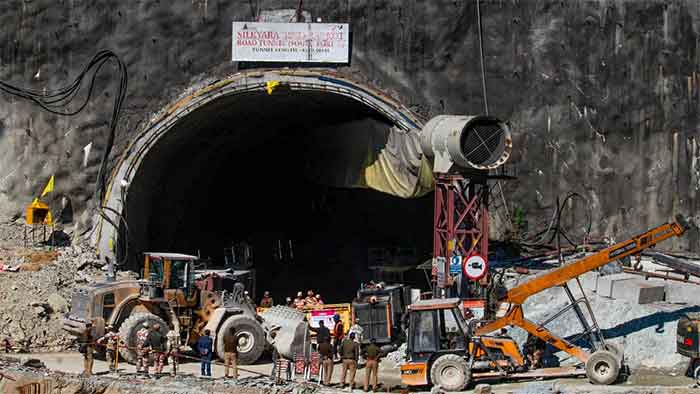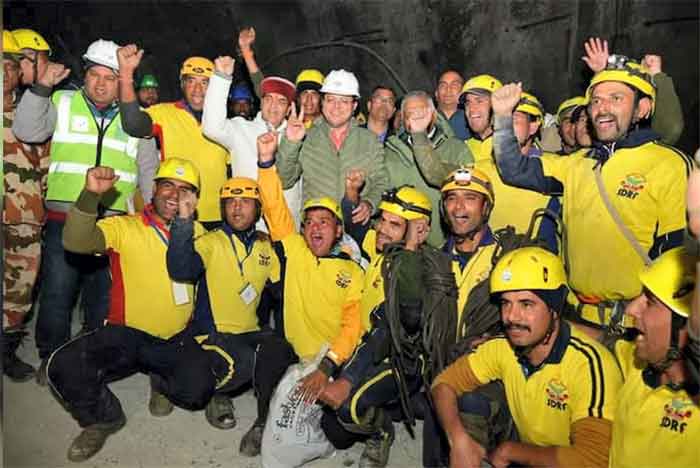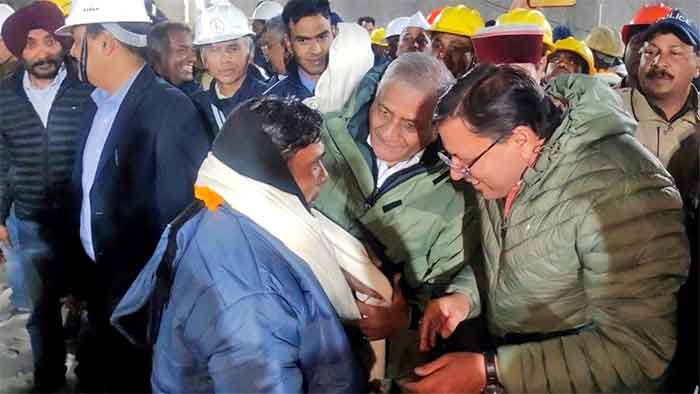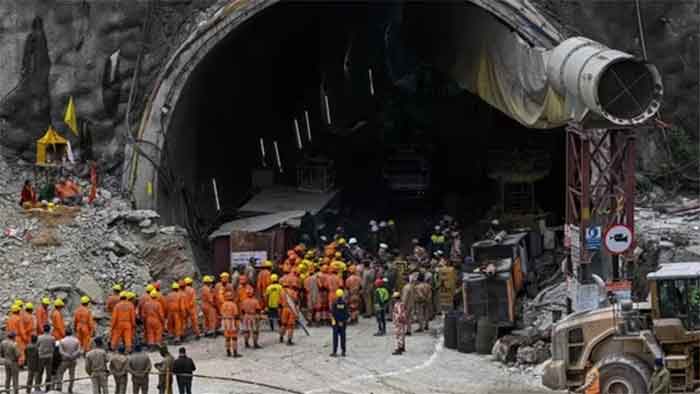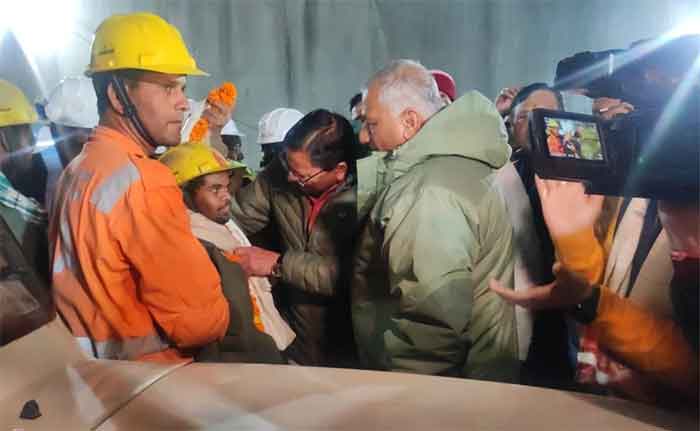Development cannot be a mindless process when it comes to the mountains. What we are witnessing is a slow man made death of the fragile Himalayas.
Silkyara-Danda Tunnel Collapse
On the 12th of November around 200 mts from the entrance the tunnel collapsed trapping 41 labourers. The Silkyara Danda tunnel which is a part of PM’s visionary ‘Chardham Mahamarg Pariyojna’ was approved in 2018 by the Cabinet Committee on Economic Affairs Chaired by the PM, the total project cost is estimated at Rs. 1383.78 cr. This tunnel will reduce the travel distance from Dharasu to Yamunotri by about 20kms.
The collapse of the tunnel has gathered global attention, the prompt response & involvement of the Central & the State Govt. reflects the scale & seriousness of the incident. Whether this happened due to callousness or any other reason is a matter which should be investigated but several questions are being raised by experts, locals, families of the trapped labourers as well as labour unions.
Uttarakhand which is already sitting in the lap of fragility & witnessing several ecological challenges is being exposed to the vulnerability of unplanned & ill thought development.

Echoes of Neglect: Uttarakhand’s Persistent Disregard for Past Disasters
Reckless repetition, turning a blind eye & ignoring lessons from disasters in the past has only invited more trouble for the Himalayan state.
The hills of Uttarakhand are bearing the cost of progress, while development is necessary but irreversible harm being made to the Himalayan ecology and human habitats due to intensive construction is showing up across the state. Joshimath – is a very recent example of the impact of heavy construction, numerous families living in Joshimath were displaced earlier this year & had to be shifted after their homes developed deep cracks, residents attributed the sinking of their town to excavation work linked to the Tapovan Vishnugad hydel power project, a 520 megawatt dam. Experts also point to the Char Dham project, a 900 km-long all-weather road, as another contributing factor. Though the work was halted back then, a report on Joshimath land subsidence prepared by 8 central technical & scientific institutions recommended a complete ban on new construction in the area & also banning construction within 250 metres of landslide zones. The state govt was hesitant on making the report public but the Uttarakhand High Court intervened & objected to the govt’s decision on keeping the report a secret.
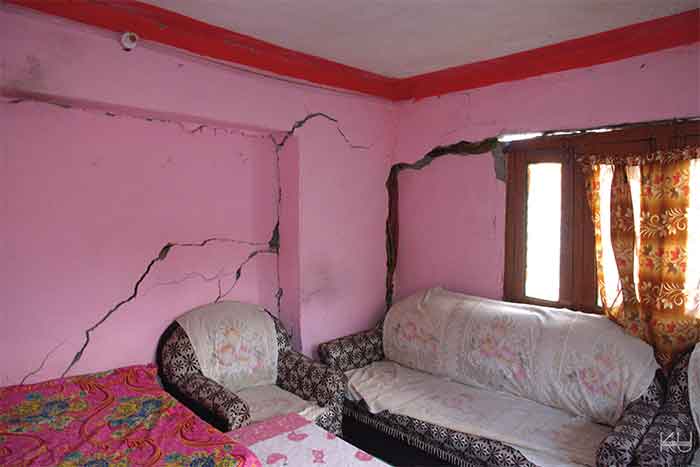
Several experts & reports by academics & scientists have accused the Uttarakhand govt officials of green lighting construction without thorough planning and impact assessments, they have been blamed for granting clearances without enforcing environmental and social laws & how lack of safety monitoring jeopardizes the lives of workers and villagers.
As the rescue operations continue at the Silkyara Danda tunnel , a coalition of ten Central Trade Unions (CTUs) expressed frustration over the authorities’ lack of accountability for the Silkyara Tunnel collapse in Uttarkashi. In a joint statement, they highlighted how workplace accidents reveal flaws in safety laws and violations. The CTUs called on the Centre to withdraw the Occupational Safety, Health, and Working Conditions Code, advocating for the ratification of International Labour Organization (ILO) conventions on health and safety. As rescue operations continue for 41 trapped workers in Uttarkashi, the CTUs criticized the delayed response from the Centre and emphasized the need for a thorough investigation into the tunnel’s planning and construction.
Lives Lost to the Confluence of Human and Natural Disasters in the recent past
Chamoli Electrocution 2023:
A tragic incident unfolded on July 19 at the Namami Gange project site in Chamoli district, claiming the lives of 16 individuals who were electrocuted following a transformer explosion. A magisterial investigation revealed faulty earthing as the cause of the devastating event, whoch also left seven people injured. The casualties, including a police sub-inspector and three home guards, prompted Chief Minister Pushkar Singh Dhami to order a magisterial-level inquiry.
Monsoons 2023:
The toll from natural disasters during the three-month of the monsoons season left over 100 people dead, with more than a dozen individuals still unaccounted for. The State Emergency Operation Centre (SEOC) reports that the majority of these casualties were attributed to landslides, emphasizing the severe impact of these events on the region.
Draupadi ka Danda avalanche 2022:
A formidable avalanche struck a group of NIM’s AMC course trainee mountaineers in their quest to conquer a peak, resulting in the entrapment of 29 individuals, including the institute’s instructors, in a crevasse. The aftermath witnessed the recovery of 27 bodies, with two individuals still missing. These sobering examples echo the profound message that nature demands our utmost respect and underscores the consequences when it is tampered with
Chamoli Dam burst 2021:
Tragedy struck Raini village in Chamoli as a massive flood hit a power project, leading to the loss of over 30 lives, and leaving more than 170 individuals missing. The affected site was the Tapovan hydroelectric project, a multimillion-dollar venture generating 520 megawatts, which, along with another dam project, succumbed to a deadly flash flood triggered by a Himalayan glacial burst, as reported by the Uttarakhand State Disaster Response Fund
Floods & landslides across Uttarakhand 2021 also left over 300 dead, from Kedarnath to the Siklyara Danda Tunnel the list of disasters is long.
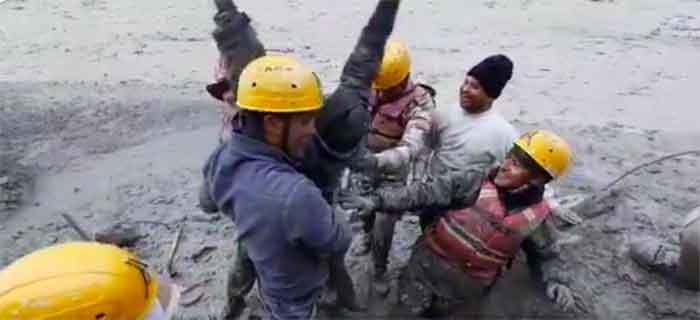
As a native who was raised amidst the hills of Nainital, I find the current development scenario in Uttarakhand disheartening, leaning heavily towards concrete rather than sustainability. Residing in Nainital’s vibrant Bara Bazar, where the government invested substantially to impart a local Pahadi look, the unintended consequence has been a surge in tourist traffic. While this brings economic benefits, it also disrupts the peace of this old residential area, causing inconvenience to the locals, the issue of overflowing drainages during the monsoons after the new construction has only added to the woes. Furthermore, the transformation of Sukhatal, the catchment area of Nainital Lake, into a concrete park by the authorities adds to environmental concerns. In a time of climate change and increasing disasters, it’s imperative to adopt a more conscientious and sustainable approach to development, taking into account the needs of both the human habitat and nature.
Preserving the fragile ecosystem of Uttarakhand, balancing Conservation & development is the only way out for the authorities, i.e if they’re keen to protect the Himalayas & it’s people.
Development cannot be a mindless process when it comes to the mountains. What we are witnessing is a slow man made death of the fragile Himalayas.
Noman Siddiqui is an Independent Journalist

